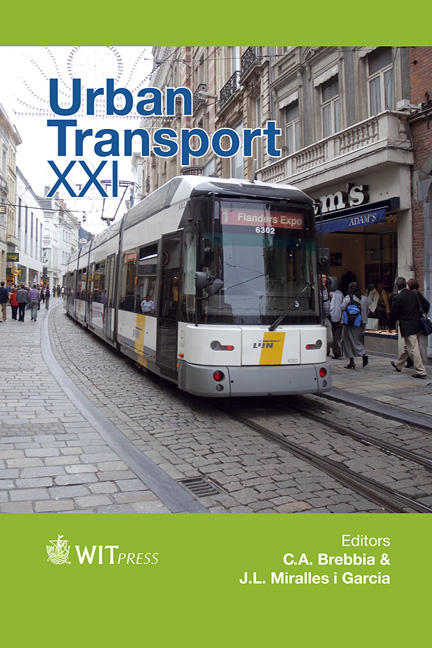Peak-hour Metro Rail Traffic Congestion Alleviation
Price
Free (open access)
Transaction
Volume
146
Pages
13
Page Range
495 - 507
Published
2015
Size
600 kb
Paper DOI
10.2495/UT150401
Copyright
WIT Press
Author(s)
S. Narayanaswami
Abstract
An urban light rail transport in the Middle East which is operated as a cyclic schedule on fixed Origin-Destination (O-D) pairs and two lines is considered. A high ridership is observed during weekends and peak hours, leading to severe over-crowding. To reduce over-crowding and alleviate congestions, three different strategic solutions are considered. (i) Reduce peak hour headways. (ii) Increase number of cabins in trains operated during peak hours. (iii) Increase number of services between modified O-D pairs with denser traffic. The problem domain is modelled as a directed transit network and further as an Linear-programming (LP) formulation with a focus on the third solution for one of the lines, under an assumption of known demand. Nodes represent arrival/departure times at each station and constraints on (i) consistency of flow, (ii) non-negativity of flow, (iii) indivisibility, (iv) demand satisfiability and (v) bounds are proposed. The objective is: (i) To minimize number of train cabins in the system; and (ii) to minimize the total car miles run by all trains in a schedule cycle. The LP Model developed for the third proposed solution is tested with actual data using an open LP Solver. Several interesting questions have arisen out of the proposed model. Attempts continue (i) to acquire, test and evaluate validated data from the operators, (ii) simulate the proposed model to one of the two operational lines and study congestion alleviation of both lines in a combined manner and (iii) evaluate the model against other possible solutions.
Keywords
congestion alleviation, cyclic timetabling, LP modeling, peak-hour traffic





